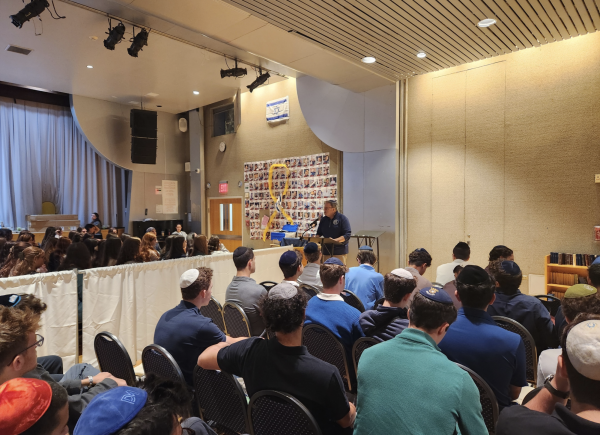New Zoom Schedule
Starting on March 12th with the shutdown of all three divisions of Ramaz, the global pandemic of COVID-19 has redefined the meaning of “school.” What began as a snow-day-like feeling of euphoria with school temporarily canceled quickly morphed into a new long-term reality for students and faculty alike. Instantly, the administration reworked how and when students and teachers would connect, for how many minutes at a time, and what to do about assemblies and classes like art and gym. Everything about school as it once was needed rethinking. The sudden change required the administration to quickly adjust and they jumped to create a new iteration of the daily school schedule. The revised Ramaz school day included hour-long classes, a 45-minute lunch break, and 15-minute breaks between classes. The new school day began at 9:45 a.m. and ended at 3 p.m.. Occasionally, mornings opened with a 9:30 a.m. assembly. The assemblies usually ran for about 30 minutes, pushing off the start of school by 15 minutes, ultimately rolling over each period and pushing out “dismissal” accordingly by 15 minutes to 3:15 p.m..
Following Pesach break, after the administration had a chance to reevaluate, students returned to a revised daily schedule. While classes remained one hour long, “lunch” was lengthened to a 1 1/2 hour-long break extending the school day by 45 minutes to a 3:45 p.m. dismissal. The reason for the change according to the administration was because “students needed a longer break with that much screen time, and the various ‘add ons’ during lunches also allowed for much-needed community touchpoints, like advisory,” explained Ms. Krupka. The 90-minute lunch slot also allows for electives including special presentations by faculty such as “BBQ Woodfire Cooking Show” with Rabbi Albo. Once a week, on Wednesdays, there is a school-wide assembly during lunch. The changes implemented were received with mixed reactions.
“We don’t need an hour and a half for lunch,” said Ralph Nakash ’21. “I would rather 45 minutes and end the day earlier with more time for other activities after school.” Other students embraced the change and according to Solly Taragin ’23, “The hour-and-a-half lunch break is great. After ‘suffering’ through two hour-long classes, the huge break in the middle of the day is exactly what I need in order to gather myself for the next two classes.”
Another highly-contested change to the new schedule are the 9:30 a.m. school-wide meetings on Monday and Fridays. As opposed to davening at 9 a.m., which is optional, the new morning meeting is mandatory and students must not only attend but also keep their screens on the entire time. Ms. Krupka said, “Students were just going to classes but they weren’t part of a school community as much since we’re not all hanging out in the building together. The Monday, Wednesday, and Friday assemblies were a way of feeling like a community, and also, as a community, getting to hear from faculty and other interesting people during the week.”
Yet another controversy since the initiation of online learning has been the administration’s decision to increase the length of each class from 40 minutes to one hour. Many students were hoping that when the new post-Pesach schedule was implemented, the one hour classes would be abolished. Kira Jacobs ’21, who was hoping the school would do away with the 60 minute long classes, remarked that sitting for 60 minutes at a time in front of a screen is a tall order. “For me, it’s impossible to stay focused for that long. Doing school from home is hard enough to focus and one-hour classes make that even worse.” Other students prefer the longer sessions and find that the extra time gives them a chance to delve deeper into the subject of each session. In support of the increase, Adam Vasserman ’21 asserted that “since most classes only meet two times a week, one-hour classes just make sense.”
Lastly, some students question why the 15-minute breaks between classes were not cut down as part of the changes implemented. With the weather becoming warmer, many students wonder why the school day was now made longer. Several suggested that the extended breaks between classes could have been cut down to allow for dismissal closer to 3 p.m., which would allow for time to enjoy the outdoors and hang out with friends online. Adam Vasserman ’21 remarked, “Who needs 15 minutes in between classes? Half the time I just sit in front of my computer waiting for the next class to start. I wish breaks were only five minutes so we can end school even earlier and get outside.” Jeremy Miller ’22 partially agreed, saying that 15 minutes does not make sense, but suggested a different viewpoint. “I think they should make breaks even longer, 25 minutes maybe. Fifteen minutes is just not enough time to get anything done.”



